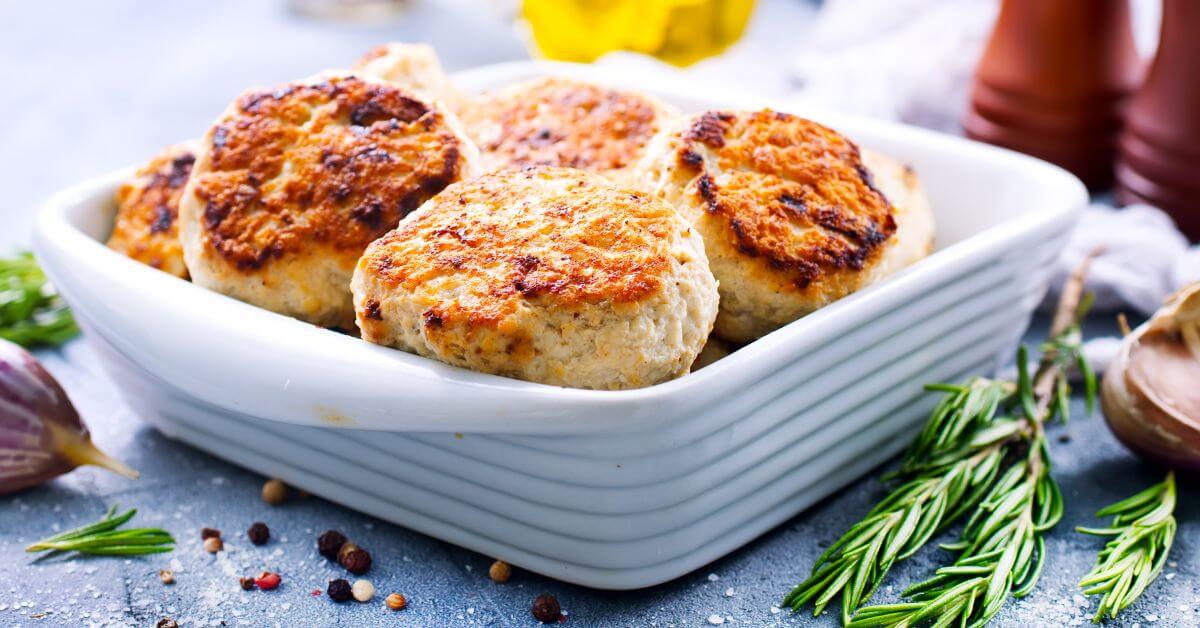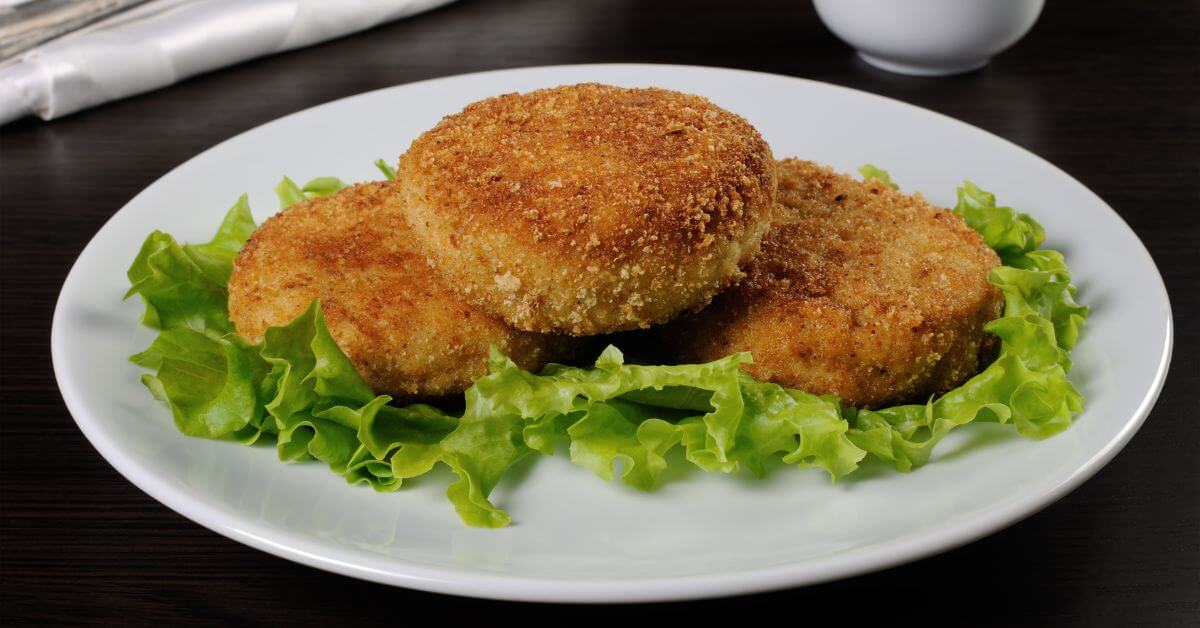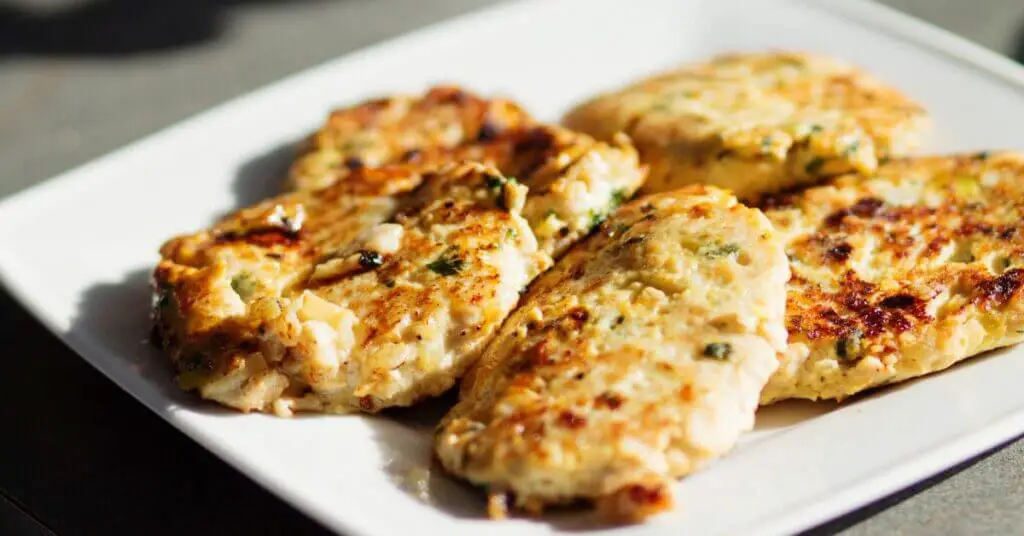Healthy Chicken cutlets, a staple in many cuisines, are versatile and widely enjoyed. Essentially, a chicken cutlet is a thin slice of chicken breast, either breaded or unbreaded, and can be prepared in various ways. Their popularity stems from their ease of cooking and adaptability to different flavors and cooking styles.
In terms of preparation, chicken cutlets can be grilled, baked, or fried. Each method imparts a distinct texture and flavor, making them a favorite for quick dinners or elaborate meals. The simplicity of chicken cutlets also allows for a range of culinary creativity, from classic breaded cutlets to marinated grilled slices.
Nutritional Profile of Chicken Cutlets
Chicken cutlets, often a go-to choice for those seeking a balance of taste and nutrition, offer a rich profile of both macronutrients and micronutrients. Understanding this profile is key to incorporating them healthily into your diet.
Macronutrients
- Protein: Chicken cutlets are an excellent source of high-quality protein, essential for muscle building, repair, and overall body function. A typical chicken cutlet can provide a substantial portion of the daily recommended protein intake.
- Carbohydrates: Generally, chicken cutlets are low in carbohydrates, especially when they are unbreaded. However, breaded chicken cutlets will have a higher carb content due to the breading.
- Fats: The fat content in chicken cutlets varies based on the cooking method and whether the skin is left on. Grilled or baked skinless cutlets are relatively low in fat, while frying, especially deep frying, increases the fat content significantly.
Micronutrients
Healthy Chicken cutlets are not only about macronutrients; they also provide essential micronutrients:
- Vitamins: They are a good source of B vitamins, particularly niacin (B3) and vitamin B6, which are crucial for energy metabolism and nervous system health.
- Minerals: Cutlets provide essential minerals like phosphorus, crucial for bone health, and selenium, an important antioxidant that supports immune function.
Comparison with Other Chicken Parts
- Breast vs. Thighs: Chicken cutlets, usually made from breast meat, are leaner and higher in protein compared to thighs, which have more fat.
- Skinless vs. Skin-on: Skinless chicken cutlets are lower in fat and calories compared to skin-on versions.
- White Meat vs. Dark Meat: Chicken cutlets (white meat) are leaner and lower in calories than dark meat parts like legs or thighs, which have more fat but also more iron.
In summary, chicken cutlets can be a nutritious component of your diet, particularly when prepared in a healthy way. They offer a great balance of essential nutrients while providing versatility in culinary preparation. For a deeper understanding of the nutritional value of chicken, the Wikipedia page on Chicken as food provides comprehensive information.
Cooking Methods and Health Implications
The cooking method significantly impacts the healthiness of chicken cutlets. Grilled chicken cutlets are generally considered healthy than breaded or fried ones due to lower fat and calorie content. Grilling imparts a smoky flavor and keeps the chicken moist without the need for additional fats.
On the other hand, breaded and fried chicken cutlets, while delicious, are higher in calories, fats, and carbohydrates. The breading, often made from flour or breadcrumbs, adds extra carbs and fats, especially if the cutlets are deep-fried. However, for those who prefer the texture and taste of breaded chicken, there are healthier alternatives. Baking breaded cutlets or using healthier breading options like almond meal can reduce calorie and fat content.
For those interested in exploring various cooking techniques and their health implications, the Wikipedia page on Cooking offers valuable insights.
The Impact of Breading on Health

Breading chicken cutlets can significantly alter their nutritional profile. While it adds flavor and texture, it’s important to understand how different types of breading affect health and to explore healthier alternatives.
Types of Breading Used
- Traditional Breadcrumbs: Commonly used for a classic crunch, they are typically made from wheat and contain gluten.
- Panko Breadcrumbs: A Japanese-style breadcrumb known for its light, airy texture. It creates a crisper coating than traditional breadcrumbs.
- Cornflake Crumbs: Used for a crunchier texture, they can be higher in sugar compared to other types.
- Flour-Based Breading: Often used as a base layer before adding breadcrumbs, it can increase the carbohydrate content.
Nutritional Differences
- Calories and Carbohydrates: Breading adds extra calories and carbohydrates to chicken cutlets. The denser the breading, the higher the calorie and carb content.
- Fats: When breaded chicken cutlets are fried, the breading absorbs oil, increasing the fat content significantly.
- Fiber: Whole grain or high-fiber breading options can add beneficial fiber but are still calorie-dense.
Healthier Breading Alternatives
- Almond Flour or Almond Meal: A low-carb, gluten-free alternative that adds a nutty flavor and is rich in healthy fats.
- Whole Wheat Breadcrumbs: Higher in fiber than white breadcrumbs, they offer a healthier, whole-grain option.
- Crushed Nuts or Seeds: Options like crushed almonds or flaxseeds provide a crunchy texture and add healthy fats and nutrients.
- Oat Flour: A gluten-free option that’s higher in fiber and can be used for a subtler, softer coating.
- Air Frying: Using an air fryer with minimal oil can create a crispy texture without the need for deep frying.
In conclusion, while breading can enhance the taste and texture of chicken cutlets, it’s important to consider its impact on health. Opting for healthier breading alternatives and cooking methods like baking or air frying can make breaded chicken cutlets a more nutritious choice. For those looking for inspiration on healthier chicken recipes, Pinterest offers a wealth of ideas. Check out these links for Healthy Chicken Recipes and Oven-Fried Chicken Ideas.
Caloric Content and Weight Management
Understanding the caloric content of chicken cutlets and how they fit into weight management is crucial for maintaining a balanced diet. Here’s a breakdown of their calorie comparison with other foods, their role in weight management, and tips for portion control.
Calorie Comparison with Other Foods
- Chicken Cutlets vs. Red Meat: Generally, chicken cutlets, especially when grilled or baked, have fewer calories compared to red meats like beef or pork. This makes them a preferable option for those counting calories.
- Breaded vs. Unbreaded Cutlets: Breaded chicken cutlets contain more calories due to the added carbohydrates and fats from the breading and cooking oil. Unbreaded, grilled, or baked cutlets are lower in calories.
- Compared to Plant-Based Proteins: Chicken cutlets have a higher calorie count than most plant-based proteins but offer a complete protein profile, which is essential for muscle building and repair.
Role in Weight Management
- Protein-Rich: High in protein, chicken cutlets can be beneficial for weight management. Protein helps in feeling full longer, reducing the likelihood of overeating.
- Low in Saturated Fat: Especially when skinless, chicken cutlets are low in saturated fats, making them a healthier choice for maintaining a healthy weight.
- Versatility: Their versatility in cooking allows for various healthy preparations that can fit into a weight management diet.
Portion Control Tips
- Size Matters: Aim for a portion size of about 3-4 ounces (about the size of a deck of cards) per serving.
- Balanced Plate: Fill half of your plate with vegetables, a quarter with chicken cutlets, and the remaining quarter with whole grains or other complex carbohydrates.
- Mindful Eating: Eat slowly and savor each bite, which can help in recognizing fullness cues and prevent overeating.
- Meal Prep: Preparing portions in advance can help in controlling how much you eat and avoid the temptation of second servings.
By understanding the caloric content and practicing portion control, chicken cutlets can be a valuable part of a weight management diet. They provide essential nutrients while allowing for versatility in meal planning. For those interested in low-fat diet options, the Wikipedia page on Low-fat diet provides valuable insights.
Healthy Alternatives to Traditional Chicken Cutlets

Opting for healthier alternatives to traditional chicken cutlets can significantly enhance their nutritional value without sacrificing flavor. Here are some alternatives that offer a healthier twist to the classic chicken cutlet:
Oven-Fried Chicken
- Method: Oven-frying chicken cutlets is a healthier alternative to deep frying. This method involves baking the breaded cutlets in the oven until they are crispy. It requires significantly less oil, reducing the overall fat content.
- Benefits: By oven-frying, you can achieve a similar crispy texture to traditional fried chicken but with fewer calories and less fat. It’s also a more hands-off cooking method, allowing the oven to do most of the work.
- Tips: For extra crispiness, you can lightly spray the breaded cutlets with a cooking spray before baking. Using a wire rack on a baking sheet helps air circulate around the cutlets, crisping them evenly.
Using Leaner Cuts
- Choice of Cuts: Opting for leaner cuts of chicken, such as skinless chicken breasts, can make your cutlets healthier. These cuts are lower in fat compared to thighs or wings.
- Benefits: Leaner cuts are high in protein and low in fat, making them an excellent choice for those watching their calorie intake.
- Preparation: To prevent lean cuts from drying out, marinating or brining them before cooking can help retain moisture and add flavor.
Alternative Coatings and Marinades
- Coatings: Instead of traditional breadcrumbs, consider using alternatives like almond flour, crushed nuts, or whole-grain breadcrumbs for breading. These options can offer additional nutrients and lower carbohydrate content.
- Marinades: Marinating chicken in yogurt, buttermilk, or citrus-based marinades not only adds flavor but also tenderizes the meat. Adding herbs and spices to the marinade can enhance the taste without extra calories.
- Health Benefits: These alternatives can provide additional nutrients like healthy fats, fiber, and antioxidants. They also help in reducing the overall calorie content of the cutlets.
Incorporating these healthier alternatives into your cooking can transform traditional chicken cutlets into a nutritious and delicious component of your meals. By being mindful of the ingredients and cooking methods, you can enjoy chicken cutlets that are both flavorful and beneficial to your health. For creative ideas on chicken marinades, Pinterest’s collection of Chicken Marinades offers a variety of options.
FAQs
- How big of a difference nutritionally is breaded chicken vs grilled chicken?
- Breaded chicken typically has more calories, carbohydrates, and fat, especially if it’s fried. Grilled chicken, when properly marinated and not too thick, is generally healthier. It contains less fat and can be just as flavorful.
- Are air fryer chicken cutlets healthy?
- Yes, chicken cutlets cooked in an air fryer can be considered healthy. This method requires no oil, reducing the fat content significantly compared to traditional frying methods.
- What is the calorie content of chicken cutlets compared to chicken breast?
- There are about 151 calories in 100 grams of light meat, like chicken breast. The calorie content would generally be lower in a boneless, skinless, cooked chicken cutlet, especially if it’s not breaded or fried.
- How healthy is baked breaded chicken?
- Baked breaded chicken is a healthier option than fried chicken. It contains less fat and fewer calories. The batter used in baking is also typically lower in fat compared to traditional frying batters.
- What are the health benefits of crispy oven-baked chicken cutlets?
- Crispy oven-baked chicken cutlets are a healthier alternative as they are baked to perfection, being crispy on the outside and tender and juicy on the inside, without the added fat from frying.
For more tips on healthy eating, Pinterest’s Healthy Eating Tips provides a range of ideas.
Conclusion
In conclusion, chicken cutlets can be a healthy addition to your diet when prepared and consumed mindfully. The key lies in choosing the right cooking methods, such as grilling or baking, and opting for healthier breading alternatives when desired. Additionally, being mindful of portion sizes and accompanying sides can help maintain a balanced diet.
Chicken cutlets offer versatility in cooking, allowing for a range of flavors and textures. Whether you’re looking for a quick, protein-packed meal or an elaborate dish, they can be adapted to suit various dietary needs and preferences.
For those managing their weight, incorporating chicken cutlets into meals can be a delicious and nutritious option. By exploring healthier cooking methods and alternatives, one can enjoy the delightful taste of chicken cutlets without compromising on health goals.
Remember, the way you prepare and serve chicken cutlets can make a significant difference in their health impact. Embracing healthier cooking practices and ingredients can transform this simple dish into a nutritious and enjoyable part of your diet.
